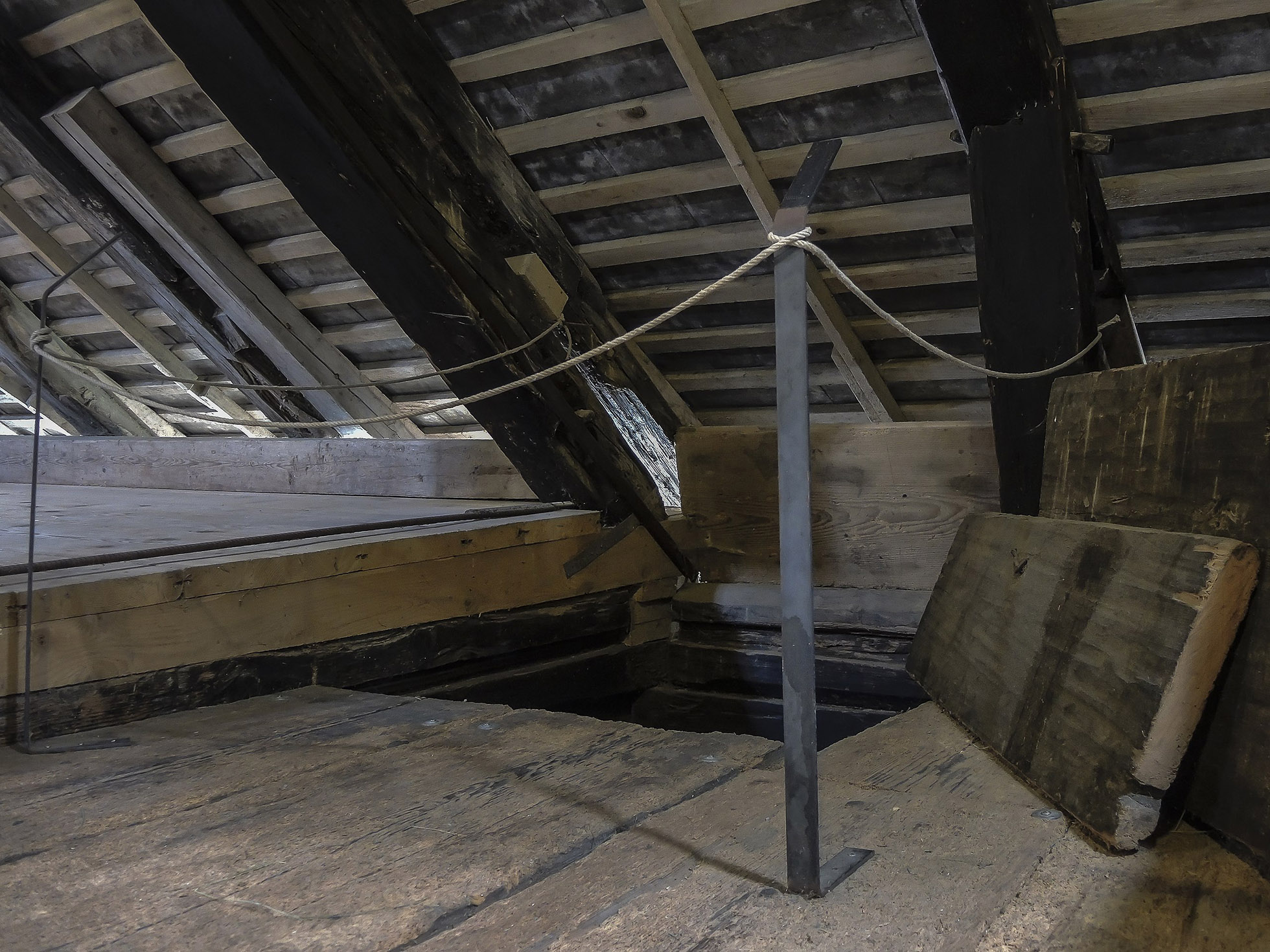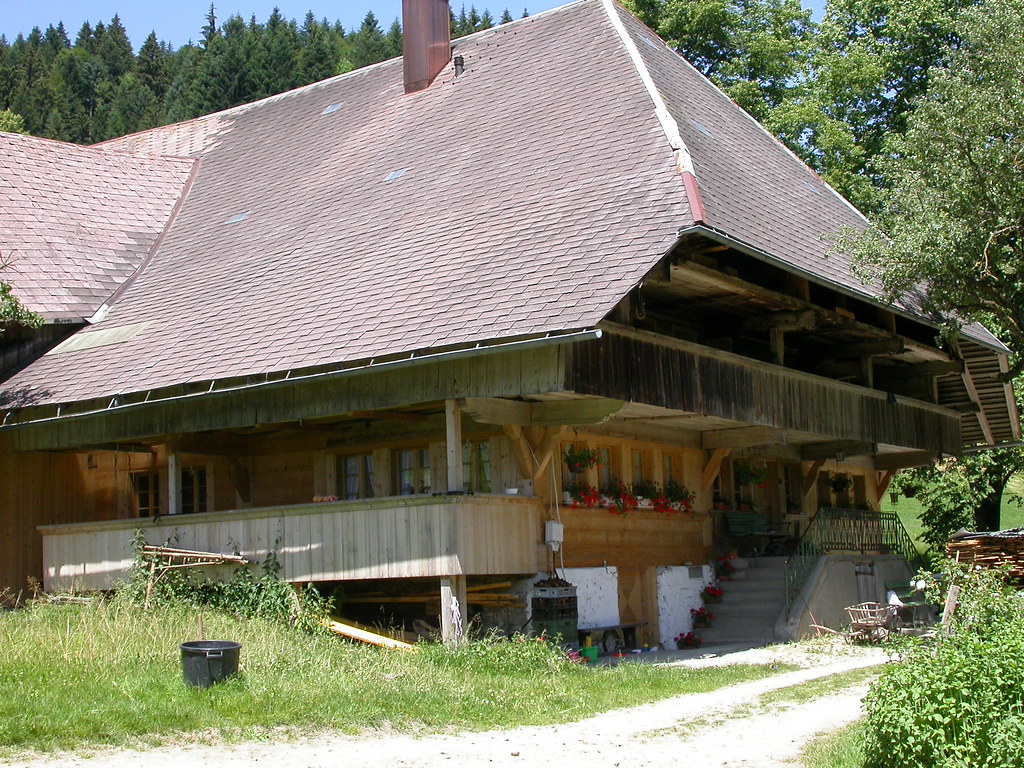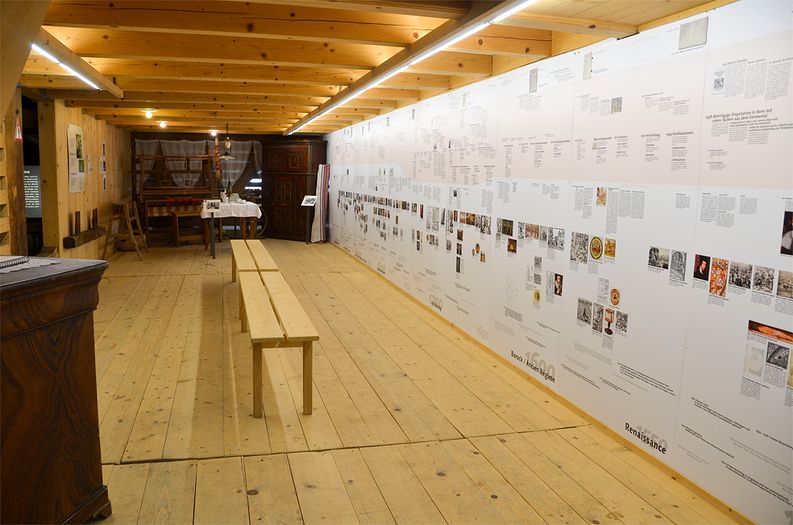25 - The Täuferversteck - "Anabaptist Hiding Place"

Anabaptist hunters were employed in the 18th century. In 1734 two Anabaptist hunters were out and about to catch Christian Siegenthaler in the lower Hälig, Wüthrich zu Häuser, Hans Gerber, called “Stadler”, and David Baumgartner. The Anabaptist yegi were disturbed by the fact that the persecuted “were warned with horns, shooting, Scheyen and similar signs” and were able to flee or hide. In the family house Fankhauser in behind-huts is still under the “Bühni” an Anabaptist hiding place to visit. An unpleasant story happened in autumn 1726. Three Anabaptist hunters wanted to arrest the three Anabaptist women Anni Blaser von Langnau, as well as Elsbeth Schenk and Cathri Hofstetter, the mother and wife of the house owner Hans Baumgartner, in the windbreak above Kröschenbrunnen. This and two of his friends resisted and rightly stated that they were on Lucerne soil. Therefore nothing should be done to women. They made threats against the hunters: They want to show them the March! Baumgartner had pulled the knife, he would rather die before the hunters carry the women away. He and his friends have also uttered “appalling and terrible curses and words” against the Anabaptist hunters. They told the Anabaptist Wüthrich that he was a “bad Gsell, rogue,
The persecution of the Bernese Anabaptists lasted for more than three centuries. The Federal Constitution of 1848 finally brought them freedom of belief and conscience. –Source


The only known hiding place still in existence is the “Täuferversteck” located at the Fankhauser trapdoor leading to the hidden chamber home. Christen Fankhauser built a hidden chamber behind the place in his barn where the family smoked meats to preserve for the winter. There was a trapdoor that led to the room covered by straw. Except for family lore, the hideout was unknown to the public until the current owner’s wife, Regula, decided to research the history of the hideout. She became fascinated and decided to turn her farm into a museum and to open it to the public. Lore has it that because of her research into Anabaptist history, she became convicted and converted to Christianity. –Source



